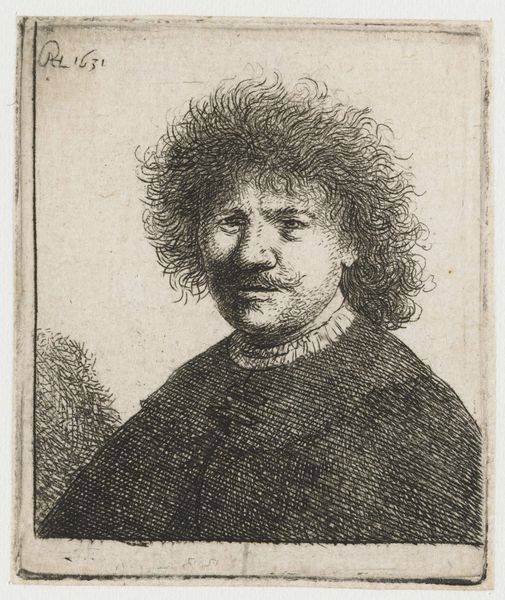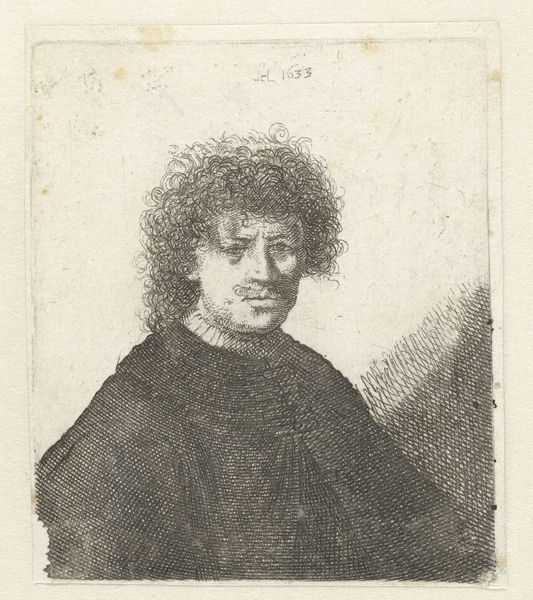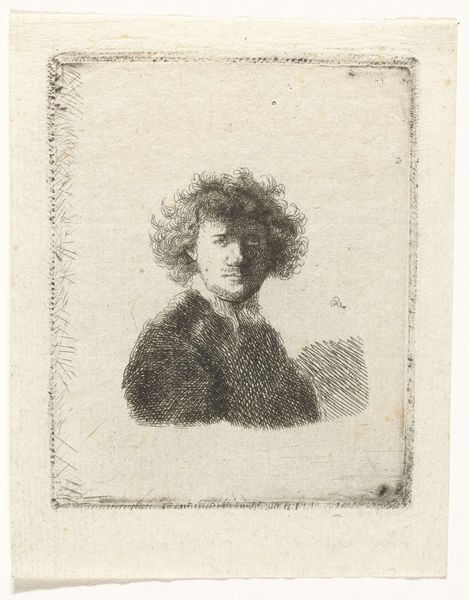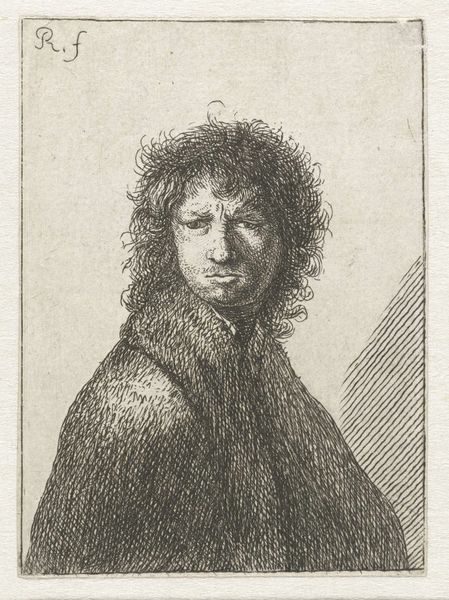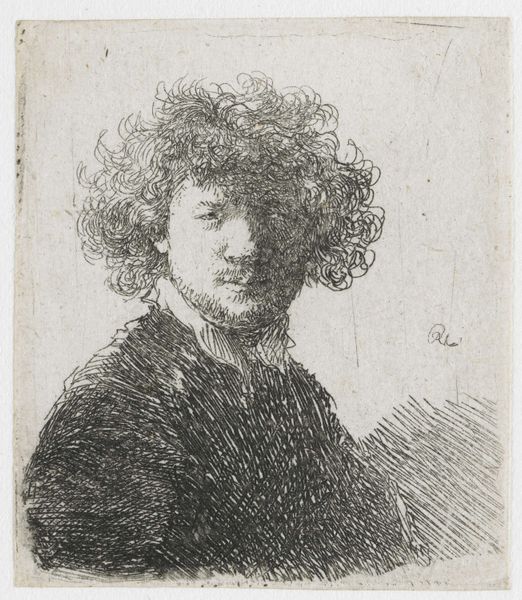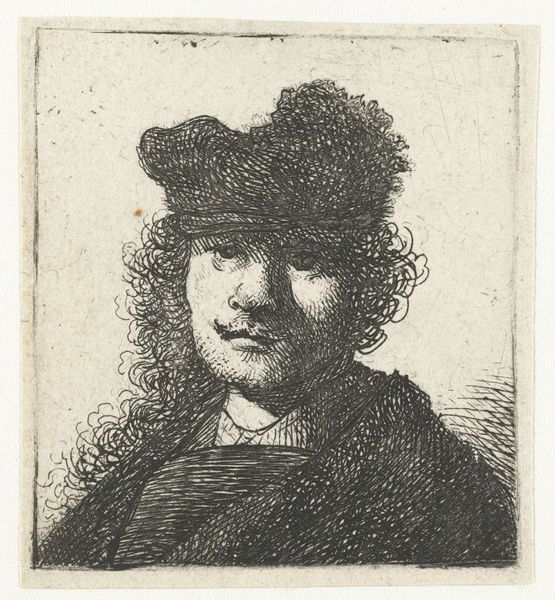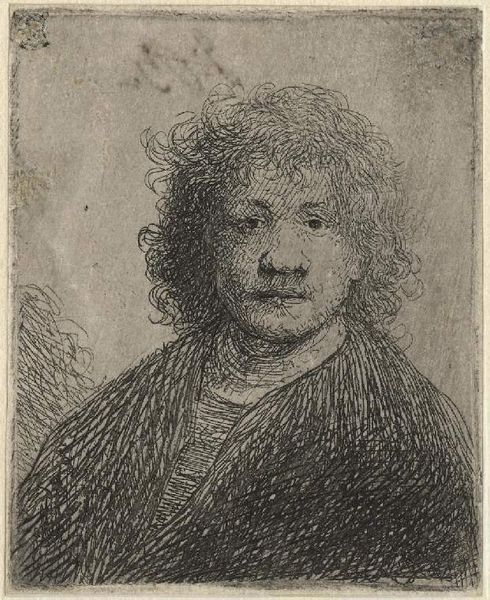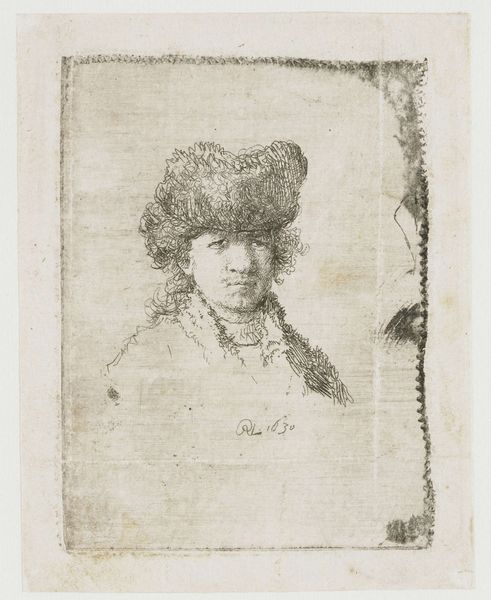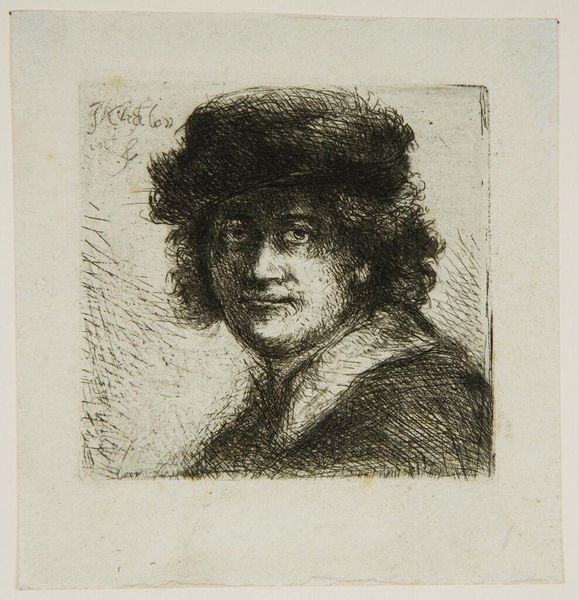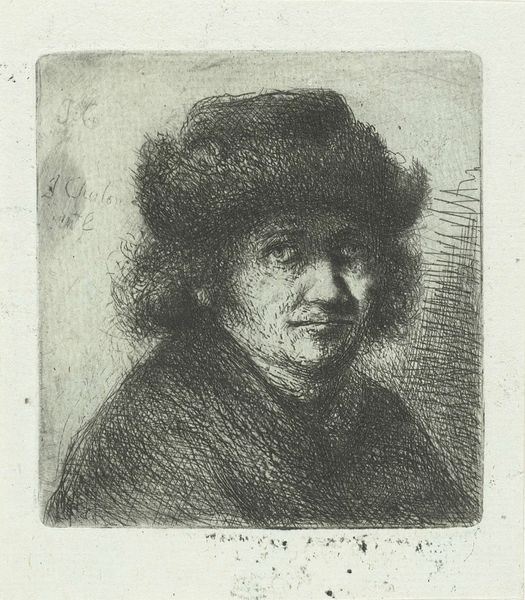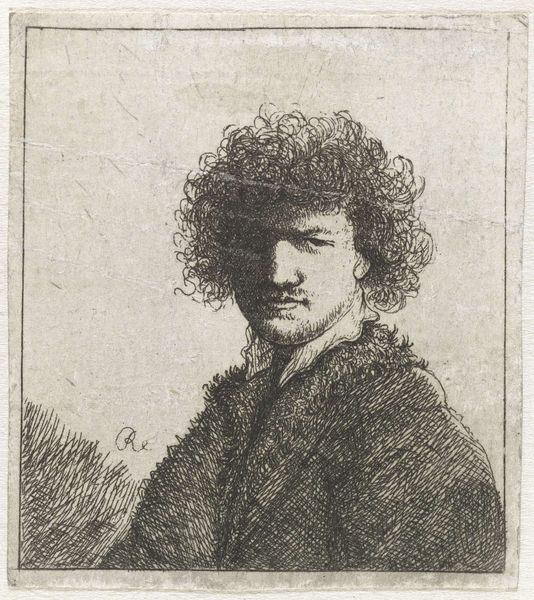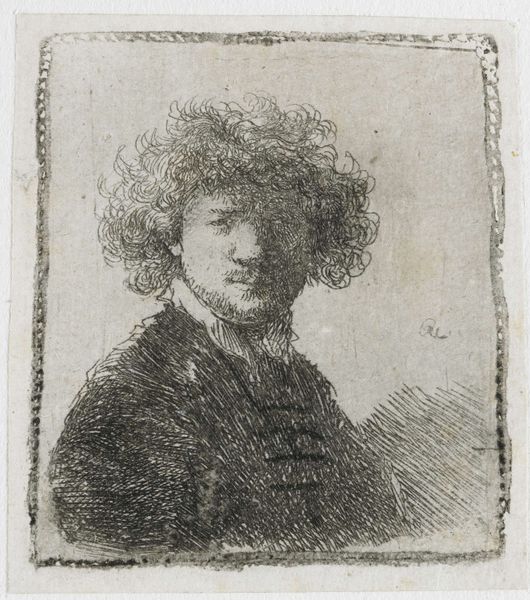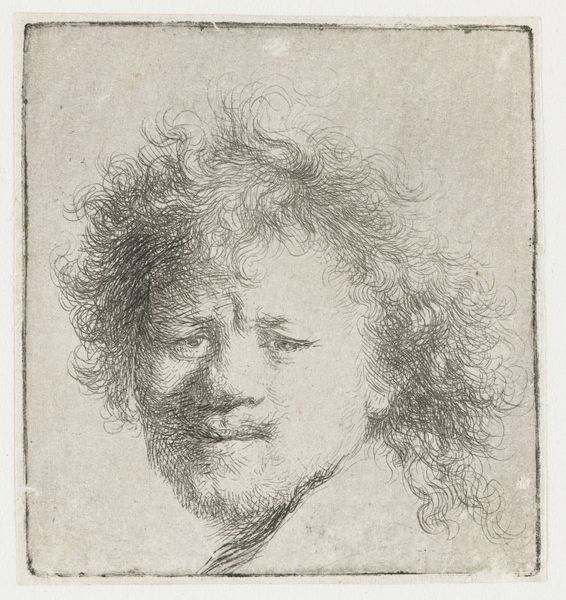
print, etching
#
portrait
#
self-portrait
#
baroque
#
dutch-golden-age
# print
#
etching
Dimensions: height 64 mm, width 54 mm
Copyright: Rijks Museum: Open Domain
Editor: Here we have Rembrandt van Rijn's "Self-portrait in a cloak with a falling collar: bust", created around 1631, using etching. It strikes me how much texture he manages to achieve with just lines! What do you make of the composition here? Curator: Focusing solely on form, the dynamism achieved through the etched lines creates visual interest. Observe how the density of the lines defines the figure against the negative space. The falling collar itself acts as a pivotal element, directing our eye from the bust upwards to the face. The tonal contrast creates depth, highlighting certain features. What about the etching process itself? How does that contribute? Editor: I see what you mean; the collar’s definitely a focal point. Considering the etching, the intricacy and the fineness of lines forming textures on the face gives the portrait a raw, immediate feel, as if you are watching Rembrandt at work. Does the interplay of light and shadow within the lines hint towards a particular style? Curator: Certainly. The baroque elements are evident not in overt ornamentation, but rather the intense chiaroscuro. See how the shadows aren't just absences of light, but active shapes. It articulates the three-dimensionality and heightens the drama within a simple bust. Do you feel the relatively square crop contribute to the affect? Editor: It creates this very intimate frame, pushing the figure forward. I hadn't really considered that until now. Curator: Exactly. This reinforces a sense of direct connection with the artist himself, a crucial dimension enabled through Rembrandt's compositional choices, as well as the texture and style coming together into a unified experience. Editor: Looking at the form has completely reshaped how I perceive this self-portrait. It is definitely more about the technical skill and arrangement of visual elements than the external subject, which gives new appreciation for Rembrandt's intention in this early work.
Comments
No comments
Be the first to comment and join the conversation on the ultimate creative platform.

